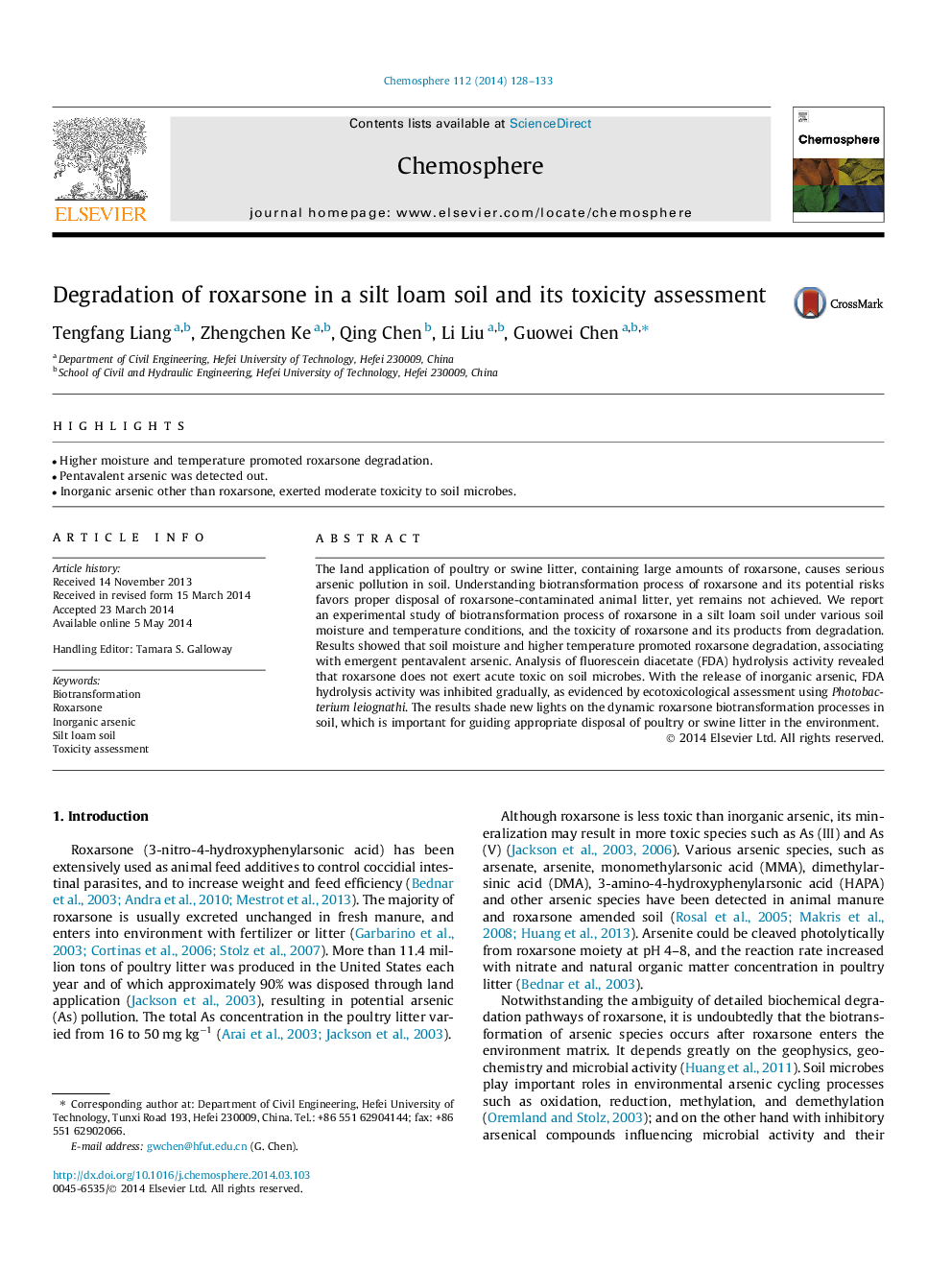| Article ID | Journal | Published Year | Pages | File Type |
|---|---|---|---|---|
| 6308774 | Chemosphere | 2014 | 6 Pages |
â¢Higher moisture and temperature promoted roxarsone degradation.â¢Pentavalent arsenic was detected out.â¢Inorganic arsenic other than roxarsone, exerted moderate toxicity to soil microbes.
The land application of poultry or swine litter, containing large amounts of roxarsone, causes serious arsenic pollution in soil. Understanding biotransformation process of roxarsone and its potential risks favors proper disposal of roxarsone-contaminated animal litter, yet remains not achieved. We report an experimental study of biotransformation process of roxarsone in a silt loam soil under various soil moisture and temperature conditions, and the toxicity of roxarsone and its products from degradation. Results showed that soil moisture and higher temperature promoted roxarsone degradation, associating with emergent pentavalent arsenic. Analysis of fluorescein diacetate (FDA) hydrolysis activity revealed that roxarsone does not exert acute toxic on soil microbes. With the release of inorganic arsenic, FDA hydrolysis activity was inhibited gradually, as evidenced by ecotoxicological assessment using Photobacterium leiognathi. The results shade new lights on the dynamic roxarsone biotransformation processes in soil, which is important for guiding appropriate disposal of poultry or swine litter in the environment.
